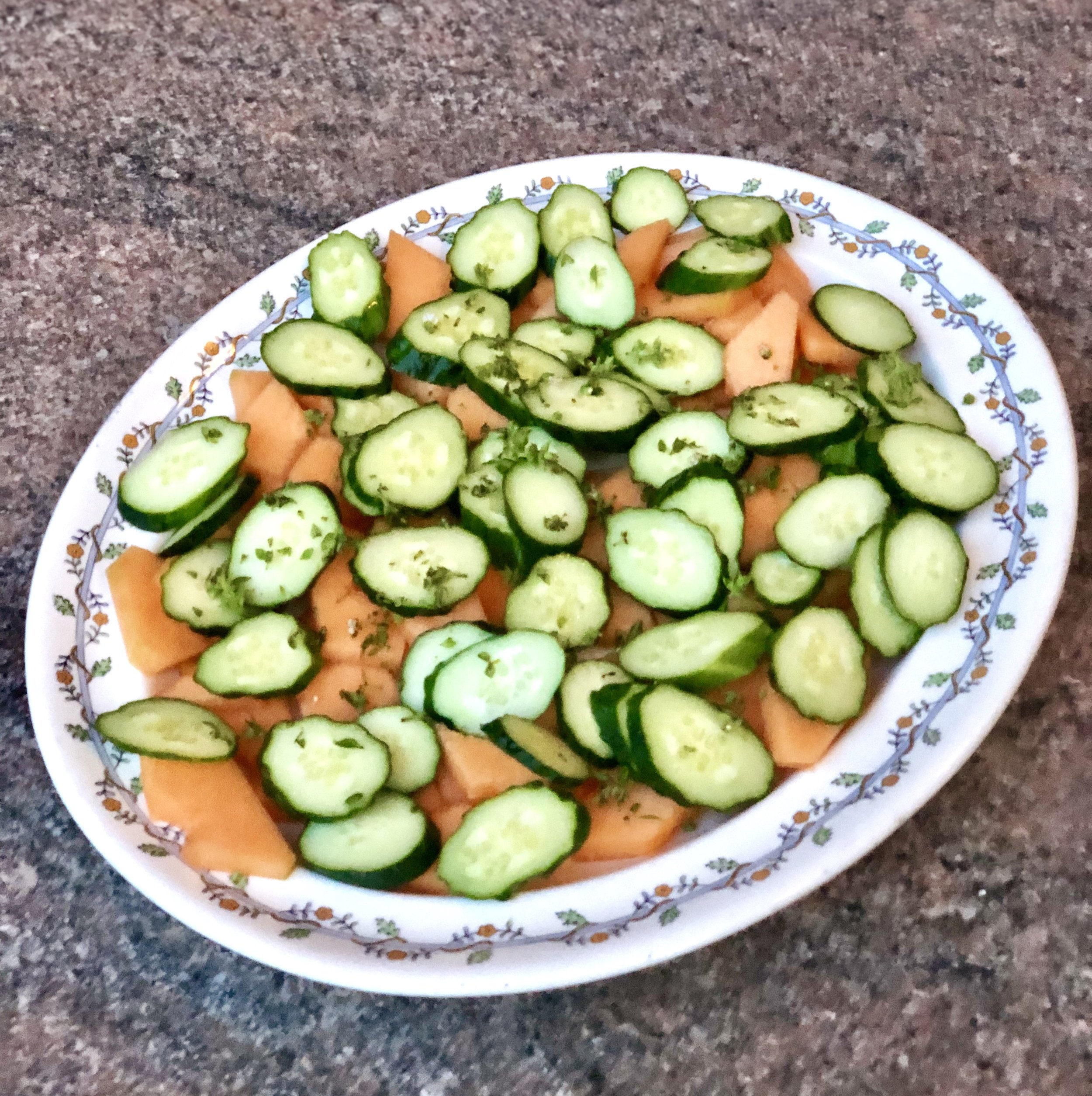This summer salad is so incredibly refreshing because both cucumber and cantaloupe have high water contents and are super hydrating. Additionally, while this dish is incredibly simple and only has a small handful of ingredients, it packs a flavorful punch. The cantaloupe (make sure it’s ripe!) is so delicate and sweet, the cucumber is crisp and earthy, and the simple dressing brings a bit of tang with the acidity. I also love the fresh basil (I used baby basil from the garden, but regular basil or even mint would be great too), which I feel brings it all together. This salad would also be great with some high quality, salty feta crumbled on top. Paired with a cool, crisp glass of wine, and you have yourself a popular starter or side dish this summer/early fall!
Ingredients:
(serves 6)
1 medium sized ripe cantaloupe
4 small/medium sized cucumbers
1 tbsp fresh chopped basil
Juice from 1 lime
2 tbsp olive oil
1 tbsp white wine vinegar
Salt and pepper to taste
Directions:
Cut the melon in half and scoop out the seeds. Cut the rind away and chop melon into thin 2 inch long slices
Cut cucumbers on a diagonal to create similarly sized pieces.
Whisk lime juice, olive oil, vinegar, salt and pepper until combined.
Arrange cantaloupe pieces on the bottom layer of a serving dish. Top with cucumber slices and basil. Drizzle the dressing on top and serve!
Health Benefits of Cantaloupe:
Cantaloupe is one of the highest fruit sources of beta-carotene, an antioxidant that converts into vitamin A in the body
They are an excellent source of vitamin C, which boosts your immune system and protects against damage from free radicals
They are super hydrating with their high water and electrolyte content, so they make a great snack or post-workout treat
Their high percentage of water helps keep things moving in the digestive tract and detoxify the body by helping to remove toxins and waste.
They are an alkaline food, which can help balance the PH levels in the body, and that can prevent inflammation and disease formation.
Sources and additional reading:













